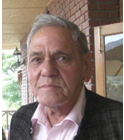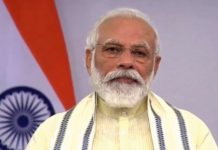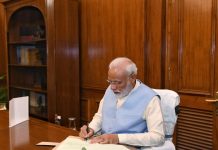
Writing an obituary offers its author a wide-angle view of the deceased and the flexibility to underscore his many good qualities that had remained somewhat obscure during his lifetime. Here Raj Kanwar shares his thoughts on the art of obituary writing.
IS writing of an obituary as easy as doing the profile of a living person? Can writing of obituaries be turned into a niche genre? And what is the difference between the writing of an obituary of a dear friend and that of an unrelated individual? Even when one knows all about his dear departed friend, still it becomes disturbing experience in many ways.
I discovered all this in ample measure in 2012 when I wrote my first obituary on the New Year day, I had not imagined that it might be a forerunner of many more obituaries in the months to come. In my long and chequered career in journalism, interrupted by some professional and business detours, I have had many occasions to write obituaries but then it was just once in a while, and even the obituaries were mostly ‘matter of fact’ without any embellishments. But now after all these years, both my friends and readers expected from me obituaries that would match ‘gourmet’ standards, no less from a master chef.

Most rookie journalists would view writing of obituaries as a distasteful exercise. What is an obituary then? In short, an obituary is nothing but a narrative of a life already lived; the difference between writing a profile of a living person and an obituary of a deceased individual is primarily a matter of ‘Tense’. The living person is referred to in the ‘Present’ and the dead person in the ‘Past’ tense. The facts remain essentially the same.
I soon discovered that writing an obituary offers its author a wide-angle view of the deceased and the flexibility to underscore his many good qualities that had remained somewhat obscure during his lifetime. Also an obituary writer tends to ignore some of his negative traits and unseemly incidents and events from his life, thereby presenting a positive image of him. For me, writing of obituary of my friends became an emotionally-wrenching experience. Many scenes from the lives of those departing friends would flit before my mind’s eyes; I remembered the unfulfilled wishes or dreams of some of them and wished they had lived a little longer to see at least the fruition of those wishes or dreams. I also recalled that a few of those late friends had nurtured grudges against some of their friends or even against their spouses, but I suppressed all such thoughts since bringing into open those private grudges or unrealized wishes is not part of an ideal obituary.
Obituaries in vogue since time immemorial
Obituary writing, as it is generally believed, is neither a recent nor modern practice. The ritual of writing obituaries has been in vogue since time immemorial; it is as old as Death though its format changed from era to era. Even though those obituaries were different both in format and content, they nonetheless served their purpose. One of the earliest obituaries dates back to early Roman era (around 59 BC). Daily newspapers were printed on Papyrus newspapers known as ‘Acta Diurna’ (Daily Events) and distributed in Rome.
Invention of Printing machine
However, the published obituary in newspapers came with the invention in 1450 of Gutenberg’s Printing machine. The credit for invention or development of printing machine goes to Gutenberg, a political exile from Mainz Germany. He had successfully done his experiments in making a Printing machine in Strasbourg, France in 1440. In a way it was the invention of printing technology that brought in its wake religious text books and sundry literature. Thus publication of both books and the news of deaths became a regular practice. However, writing of obituaries assumed greater importance during the American Civil War when it was the only source of news about deaths of near and dear ones. Thereafter obituaries became common enough not only to inform relatives and friends of the death but also of the funeral services and other post-death rituals. It wasn’t until the second half of the 20th century that the detailed obituaries outlining the lives of leading politicians and other celebrities began to be written.
It was not before long that obituaries came to be regarded as the most important post-death liturgy. Leading newspapers set up ‘Special Desks’ and Archives containing ready-to-publish instant obituaries. They also appointed dedicated obituary writers with fancy titles such as ‘Obituary Editor’ whose responsibility was to ensure that the obituary of everyone who is someone in the community is readily available when the time comes. In fact, this job of the obituary editor assumed so much importance that he soon became better known among the readers than the chief editor.
Obituary writing becomes a niche genre
Soon enough writing of obituaries became a niche genre in journalism. And in 2007, an international organization, “The Society of Professional Obituary Writers” (SPOW) which wrote about the dead as a living was founded. One of its principal functions is to provide professional training and resources to journalists so that they developed their special reporting skills for interviewing and writing outstanding obituaries.
Obituary writing, in fact, is no longer the prerogative of an amateur family member of the deceased. Numerous professional companies both in India and other parts of the world have now entered what has become a lucrative ‘Business of Death’. As soon as someone dies, these companies take over the entire responsibility, like event management companies, not only of writing an appropriate obituary but also getting it prominently published. They will also make all the required arrangements for funeral, cremation, religious ceremonies and organize all the necessary rituals beginning with uthala or chautha and tehervin, leaving the bereaved family in peace to mourn the death of their departed kin. Of course all these Services are at a cost, and a good one at that.
Death is a million dollar business
“Death is no longer a ritual merely confined to the family and its near and dear ones. Death has now become a billion dollar business worldwide.” Today, the business of Death has assumed multiple dimensions. It starts with a notice of death, publication of obituary, making arrangements for funeral, cremation or burial and followed by many post-cremation rituals that vary from religion to religion, caste to caste and of course from family to family.
Life’s journey is like ‘merry-go-round’
Life and Death are, in fact, like passengers at a Railway Station or Airport, and the journey of life is more like a ‘merry-go-round’. Tens of thousands passengers arrive daily at and depart from these Airports and Railway Stations. Just consider those Arrivals and Departures signs prominently displayed there. Everyday some people depart and others arrive. Life and Death are the two sides of the same coin. Toss it – you can never influence or even predict which side will come up. Head or tail is not in your hand. That is what our life is all about. It is the Fate, stupid. We are just Pawns in the game of Life. Death, like Birth is inevitable; then why fear the inevitable?
(Raj Kanwar is a 92-year old Dehra Dun-based veteran journalist, writer and author.)












